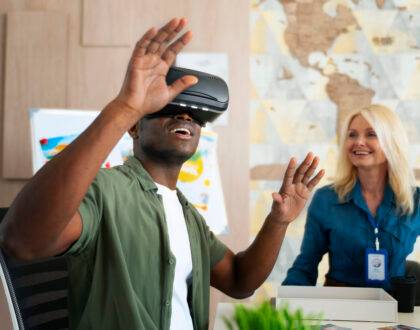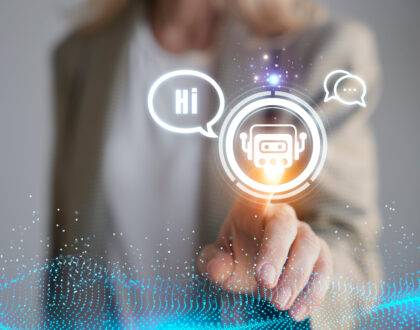The Internet of Things (IoT): Connecting Everything

by Web Digital
In a world that is becoming increasingly interconnected, the Internet of Things (IoT) stands out as a transformative technological revolution. IoT refers to the network of physical devices, vehicles, buildings, and other objects embedded with sensors, software, and network connectivity, enabling them to collect and exchange data. This extensive network of interconnected devices has the potential to revolutionize various aspects of our lives, from our homes and cities to industries and healthcare. In this article, we’ll delve into the fascinating world of IoT, exploring its implications, applications, and the future it promises.
The Foundation of the Internet of Things
The IoT is built on the foundation of sensors and connectivity. These sensors, often referred to as “smart devices,” are designed to gather data from the surrounding environment. These data points can range from temperature and humidity to motion, sound, and even chemical composition. Once collected, this data is transmitted through a network. Typically the internet, to a central location or other devices for analysis and decision-making.
Applications in Everyday Life
The impact of IoT in our daily lives is already evident, primarily in the form of smart homes. IoT-enabled thermostats, security systems, and appliances allow homeowners to control and monitor their properties remotely. They can adjust the temperature, check security camera feeds, or even receive alerts about potential issues in real time.
These gadgets monitor our health and activity levels. Collecting data that can be analyzed for insights into our well-being. Smart cities use IoT to optimize traffic flow, manage energy consumption, and improve public services. Connected vehicles offer features like GPS navigation, automatic emergency calls, and vehicle diagnostics.
Revolutionizing Industries in Internet of Things
IoT is also making waves in various industries, including manufacturing, agriculture, and healthcare. In manufacturing, the concept of Industry 4.0, driven by IoT, is transforming traditional factories into smart factories. Sensors on production lines can monitor equipment performance and detect issues, leading to reduced downtime and improved efficiency.
In agriculture, IoT is used for precision farming. Sensors in fields collect data on soil conditions, weather, and crop health. This information guides farmers in optimizing planting, irrigation, and pest control, leading to increased yields and reduced environmental impact.
In healthcare, IoT devices have the potential to improve patient care. Remote patient monitoring allows doctors to keep an eye on patients with chronic conditions, helping to prevent hospital readmissions. Smart medical devices can transmit data directly to healthcare providers, offering real-time insights into a patient’s health.
Challenges and Concerns
While IoT offers numerous benefits, it also comes with its share of challenges and concerns. One significant issue is data security. With the massive amount of data being transmitted, stored, and analyzed. There is an increased risk of data breaches and privacy violations. Protecting sensitive information from cyberattacks is a critical concern in the IoT landscape.
Another challenge is interoperability. As IoT devices are developed by various manufacturers, ensuring that these devices can communicate with each other seamlessly is an ongoing challenge. Standardization efforts are underway to address this issue, but it remains a work in progress.
Privacy concerns are also prevalent. The extensive data collection capabilities of IoT devices have raised questions about how personal information is used and shared. It’s crucial to establish clear guidelines and regulations to protect individuals’ privacy in this interconnected world.
The Future of the Internet of Things
The future of IoT is incredibly promising. As technology continues to advance, we can expect even more profound integration of smart devices into our lives.
5G Connectivity: The rollout of 5G networks will significantly enhance the capabilities of IoT devices. These networks offer faster and more reliable connections, enabling real-time data transmission and low-latency communication.
Edge Computing: Edge computing, where data processing occurs closer to the data source, will become more prevalent. This approach reduces latency and enhances real-time decision-making, making IoT devices even more responsive.
Artificial Intelligence: IoT and AI are a perfect match. AI algorithms can analyze the vast amounts of data generated by IoT devices, providing valuable insights and predictive capabilities. This will lead to more efficient operations and better user experiences.
Expanding Applications: IoT will continue to find new applications in various sectors. From smart agriculture and environmental monitoring to augmented reality and supply chain optimization, the possibilities are endless.
Ecosystem Growth: IoT ecosystems will continue to grow and evolve, leading to more collaboration and innovation. Startups and established companies will work together to develop new solutions and expand the IoT landscape.
Conclusion
The Internet of Things is more than just a buzzword; it’s a technological revolution that is shaping our world in unprecedented ways. As the IoT continues to evolve and expand, it will play a vital role in improving our daily lives, driving innovation in industries, and addressing some of the most significant global challenges. However, with these opportunities come responsibilities, such as addressing data security and privacy concerns. As we move forward, finding the right balance between innovation and protection will be crucial in ensuring that the IoT truly connects everything for the betterment of society.
Recommended Posts

The Evolution of AI in Education
December 4, 2023

Blockchain and the Future of Digital Voting
December 4, 2023

